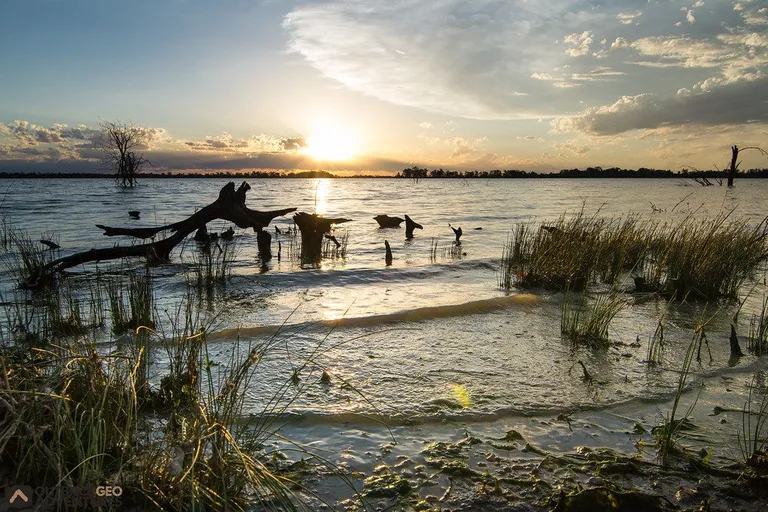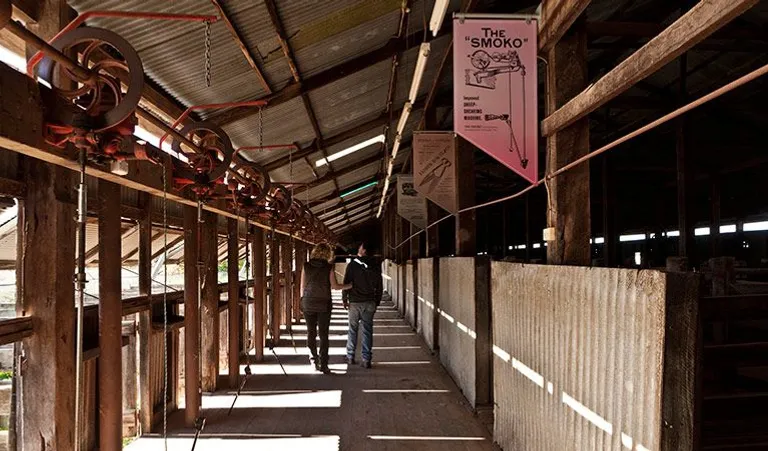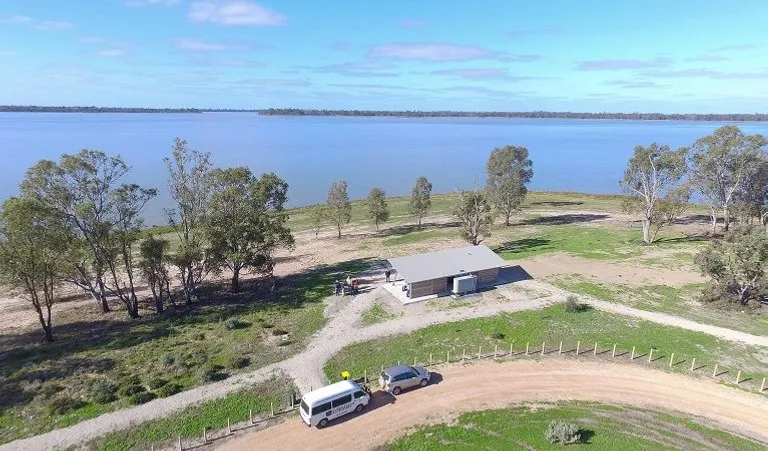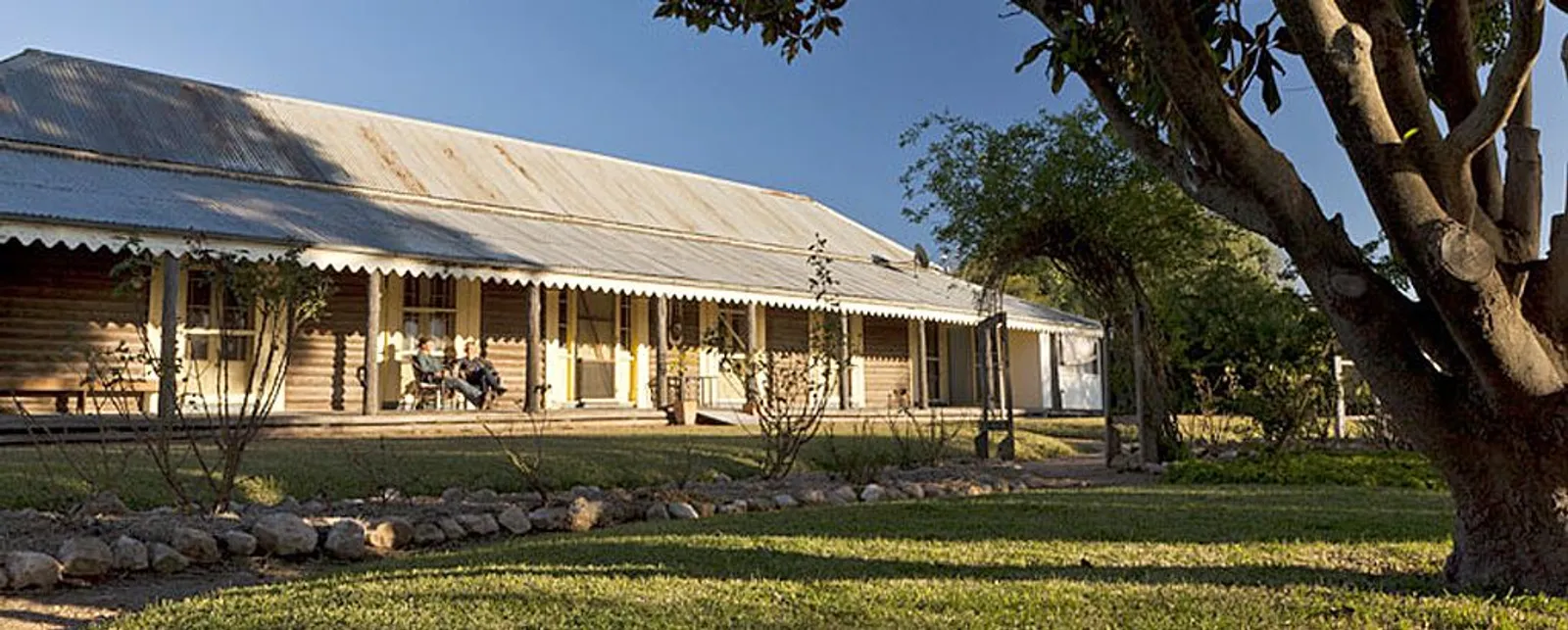Queensland National Parks has been resuming some significant agricultural and pastoral properties and converting them into National Parks for many years. In 2007 NSW followed that example, with the inauguration of Yanga National Park, close to Balranald in SouthWestern New South Wales. The Park covers an area of 66,734 hectares, including 1932 hectares of Yanga Nature Reserve and has a frontage of 170 kilometres along the Murrumbidgee River.
It is largely located in the Lower Murrumbidgee Floodplain and is included in a study titled A Directory of Important Wetlands in Australia, a collaborative effort between the Commonwealth Government and each of the State and Territory nature conservation agencies. That’s because of its importance as a breeding site for waterbirds when flooded. Yanga National Park is part of the larger Murrumbidgee Valley National Park that was created in 2010 and protects the largest continuous tract of river red gum forest in the world.
Yanga was formerly an important pastoral station, established by William Charles Wentworth – better known as one of the three explorers who blazed a path across the NSW Blue Mountains in 1813 – and was the largest privately owned station in the Southern Hemisphere, covering 85,000 hectares or some 850 square kilometres.
Yanga homestead was built around 1870 and can be visited today. The property was mostly freehold except for the 1932 hectares of Crown Land of Yanga Nature Reserve and more than 90-percent was used for grazing. Yanga Station later became part of C B Fisher’s pastoral empire. The Park lies within the traditional tribal areas of the Muthi Muthi People and there is an Aboriginal sites register covering the park, which currently includes mounds, scarred trees, historic sites, burials and middens.

Riverland Wonder
Yanga National Park incorporates 12 different wetland types according to the Ramsar Convention classification system, including inland wetlands and manmade wetlands. The Park embraces four significant bodies of water – Yanga Lake, Tala Lake, Piggery Lake and Irrigation Lake – as well as hundreds of canals and creeks, and extensive river red gum forest along the Murrumbidgee River. It is one of the most significant wetland habitats for waterbirds in Eastern Australia and home to the State’s largest known population of the endangered southern bell frog.
Seventeen vegetation classes have been identified in the Yanga National Park, with more than 300 plant species being recorded. River red gum forest and woodland, black box woodland, lignum/nitre goosefoot shrub-land and spike rush-dominated sedge-land are important vegetation classes in the area. Yanga National Park and the surrounding floodplain is habitat for 24 reptile species, 18 fish species (unfortunately, European carp dominant) and 33 mammal species (unfortunately including red fox, red deer, feral cat, brown hare, rabbit, house mouse and the destructive feral pig). A total of 64 waterbird species from 14 families have also been recorded, but changes to the natural flow regime over the past 30 years has reduced wetland availability, leading to an 80-percent decline in the number of waterbirds recorded in the area.
Since the purchase of the property in 2005 more than 200,000 megalitres of environmental water has been delivered to Yanga Wetlands by both the Federal and NSW Governments through the Rivers Environmental Restoration Program. The water has delivered benefits to wetland vegetation, black box woodland, river red gum forests and supported populations of the nationally threatened southern bell frog, while maintaining nesting sites for many waterbird species.

Visiting Yanga
Yanga National Park may be one of the State’s newest parks, but this area has significant history and Aboriginal families have lived there for millennia. From the early 1800s, explorers, pastoralists, shearers and rabbit trappers arrived, while more recently, fisher-folk and other visitors take their turn camping on the banks of the Murrumbidgee, just like Burke and Wills once did.
Bird watchers have a field day, with up to 150 species flocking in the Park’s trees, skies and ecologically-important wetlands. Along the Yanga Lake walking track there’s Yanga Lake Red Gum bird hide, which makes bird-watching less invasive. Spring and autumn are great times for birdwatching. It’s a time when the lakes fill with species that include white-bellied sea eagles and great crested grebes.
Yanga Homestead harks back to a time when Yanga Station was one of the Riverina’s most productive pastoral properties. The homestead was built around 1870, along with station outbuildings including stables, a gardener’s shed and station store. The Homestead was built using the Murray pine ‘drop log’ technique: a ‘mortise and tenon’ construction method using trimmed logs slotted into vertical beams. The buildings are in excellent condition for the most part and there are also rose gardens, restored and maintained by volunteers. You can wander around the grounds at any time and enter the cook’s cottage display, but to see inside Yanga Homestead you’ll need to pick up an audio guide and key from Yanga National Park Office, open Monday to Friday, 8.30am to 4.30pm.
Situated on a bend in the Murrumbidgee River, Yanga Woolshed was built in the late 1800s. Once the largest, most modern woolshed in the district, it could house 3000 sheep and provided work for up to 40 shearers at a time. Its location on the river was ideal for transferring baled wool to the barges hauled by paddle steamers, which then took the wool west to the Murray River junction and east to Echuca, for transfer by rail to Melbourne and eventual export. As was said at the time: “Australia rode on the sheep’s back”. Today, you can wander through the Woolshed on a self-guided tour, exploring its runs and pens, while getting a smell and a taste of Australian history. There’s also a viewing platform where the old wharf stood.
Since the purchase of the property in 2005 more than 200,000 megalitres of environmental water has been delivered to Yanga Wetlands by both the Federal and NSW Governments through the Rivers Environmental Restoration Program. The water has delivered benefits to wetland vegetation, black box woodland, river red gum forests and supported populations of the nationally threatened southern bell frog, while maintaining nesting sites for many waterbird species.

Camping
Unlike nearly every National Park in Australia, visiting and camping at Yanga is free. Yes, free. Also, campfires are permitted, outside the fire-ban period from October until April. The main 14-site campground is Mamanga, which has fire places, long-drop toilets, rubbish bins and limited phone service. Areas for large groups are also available.
The Willows – an 11-site campground – features a smaller shearing shed in the picnic area, fire places, long-drop toilets and large, flat and open areas for groups, plus smaller areas. Finally, Woolpress Bend picnic area and remote campground features three fireplace sites and long-drop toilets. There is no phone service and all sites must be booked in advance, because of limited space.
Roads into this area are well maintained and suitable for two-wheel drive vehicles, but red clay, which makes access definitely dry weather only. In addition to the formal campgrounds mentioned there are also Cooba Bend, Keenes and Sandy Bend camping areas. To find out more about Yanga National Park visit the NSW National Parks website HERE.

